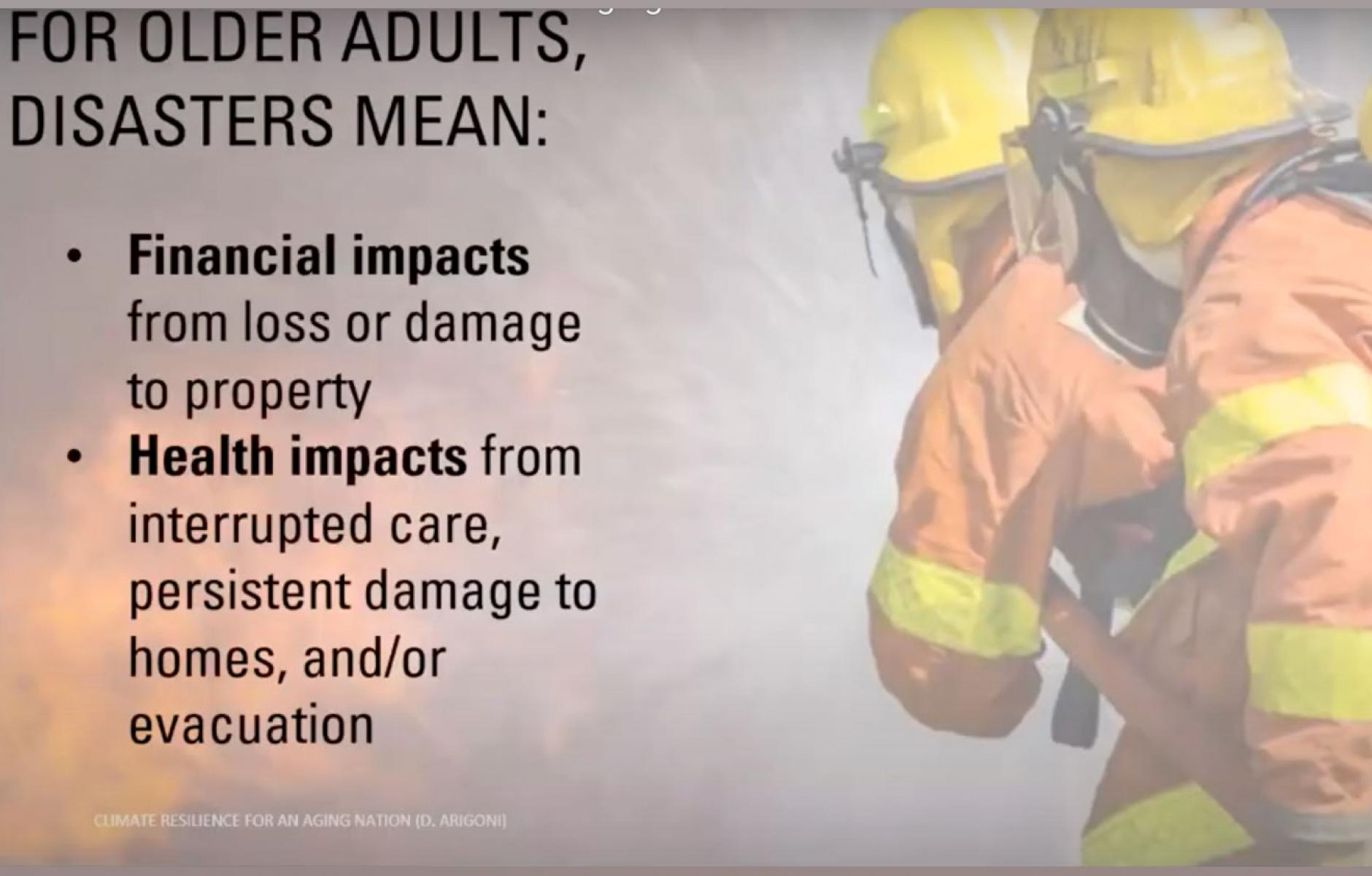
Planning for climate change and aging
Danielle Arigoni discusses her new book on how communities with aging populations can prepare for climate change on On the Park Bench. Climate Resilience for an Aging Nation argues that older adults should be the lens through which we view resilient communities. When we plan for those most impacted by a changing climate, we improve conditions for all, she explains in the webinar hosted by CNU’s Public Square this week.
Climate Resilience for an Aging Nation was published in October by Island Press. Arigoni is Managing Director for Policy and Solutions at National Housing Trust and, before that, was Director of Livable Communities for AARP.
Arigoni explains the dual trends of an aging population and climate change and how they come together as a powerful intersectional challenge rarely mentioned in the national discourse. A century ago, one in 20 Americans was over 65—now that demographic group accounts for nearly one-sixth of the nation. Older Americans have difficulty getting around (40 percent have ambulatory limitations), often have chronic medical issues (80 percent have two or more), one in nine have dementia, and 30 percent live alone. These characteristics make older Americans highly vulnerable in emergencies that require populations to move to safer ground.
Urbanism offers many solutions to climate resilience for older adults, because it creates more options for mobility and the potential for better social connections. She explains that planners can begin by taking three steps:
- Acknowledge that climate change impacts older adults differently.
- Recognize that individual and institutional preparedness is not enough.
- Lean into solutions that build community resilience for all ages.
Watch the whole webinar, moderated by CNU’s Lauren Mayer:




